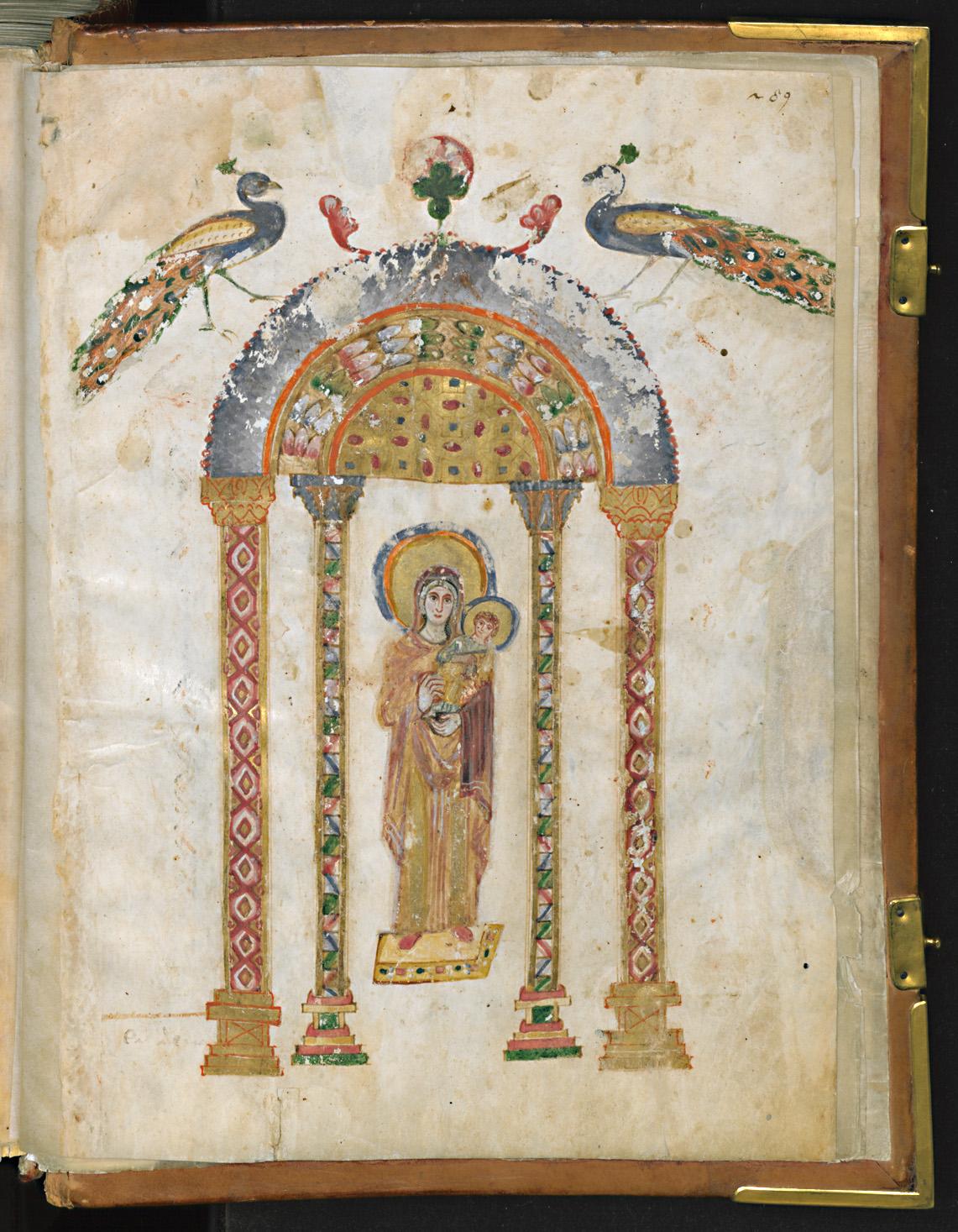LOOK: Virgin and Child from the Rabbula Gospels

Among the earliest works of Byzantine iconography, this painting is from a sixth-century manuscript of the Gospels in Syriac (Peshitta version), completed at the Bēṯ Zaḡbā Monastery in northern Syria. It shows the Virgin Mary standing under a colorfully patterned aedicule, holding her son Jesus, who faces us. Perched on the roof are two peacocks, a symbol of resurrection and eternal life.
For a blog post on one of the Rabbula Gospels’ other full-page miniatures, see here.
LISTEN: “Jesus” by Glen Woodward, arr. Valeria A. Foster, 2000 | © 2000 GIA Publications, Inc. | Performed by choral students from Western Michigan and Calvin Christian High Schools and Calvin University, dir. James Abbington, with Brandon A. Boyd on piano, February 9, 2023
Jesus
Jesus
Jesus, Jesus
JesusI worship you
I worship you
Jesus, Jesus
JesusI love you, Lord
I love you, Lord
Jesus, Jesus
Jesus
Eight days after his birth, Jesus was circumcised as the Jewish law stipulates (Lev. 12:1–3) and given his name: “When the eighth day came, it was time to circumcise the child, and he was called Jesus, the name given by the angel before he was conceived in the womb” (Luke 2:21). Thus many churches celebrate January 1 as the Feast of the Holy Name of Jesus.
The name Jesus—or Yeshua (יֵשׁוּעַ), as he would have been known to his fellow Aramaic speakers (“Jesus” is the Greek transliteration)—means “Yahweh saves.”
This post is part of a daily Christmas series that goes through January 6. View all the posts here, and the accompanying Spotify playlist here.

